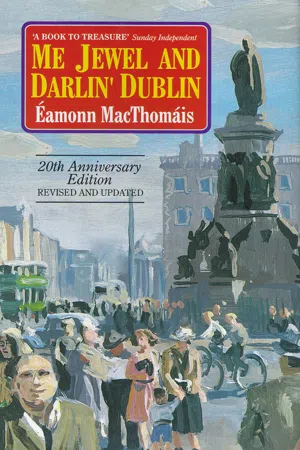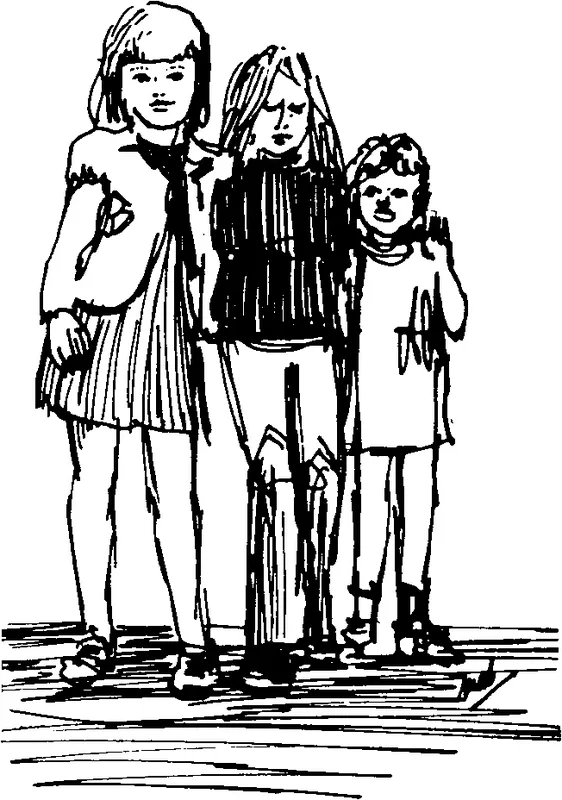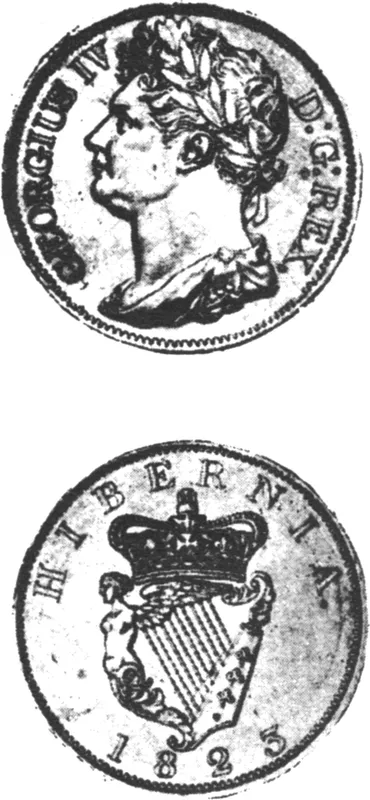
This is a test
- 192 pages
- English
- ePUB (mobile friendly)
- Available on iOS & Android
eBook - ePub
Me Jewel and Darlin' Dublin
Book details
Book preview
Table of contents
Citations
About This Book
Full of historical facts, anecdotes and Dublin wit, this book evokes the spirit, the characters and colours, the sights, sounds and even the smells of old Dublin. With sections on markets, pawn shops, street characters, the Liberties, slang and wit of Dublin's newspapers, the city's history is traced right back to Brian Boru, the Huguenots, the 'debtors' prison', and Dublin's troubled history of risings and revolutions.
Frequently asked questions
At the moment all of our mobile-responsive ePub books are available to download via the app. Most of our PDFs are also available to download and we're working on making the final remaining ones downloadable now. Learn more here.
Both plans give you full access to the library and all of Perlego’s features. The only differences are the price and subscription period: With the annual plan you’ll save around 30% compared to 12 months on the monthly plan.
We are an online textbook subscription service, where you can get access to an entire online library for less than the price of a single book per month. With over 1 million books across 1000+ topics, we’ve got you covered! Learn more here.
Look out for the read-aloud symbol on your next book to see if you can listen to it. The read-aloud tool reads text aloud for you, highlighting the text as it is being read. You can pause it, speed it up and slow it down. Learn more here.
Yes, you can access Me Jewel and Darlin' Dublin by Éamonn MacThomáis in PDF and/or ePUB format, as well as other popular books in Social Sciences & Social Science Biographies. We have over one million books available in our catalogue for you to explore.
Information
Chapter 1
A Child’s World
THE FOURPENNY RUSH
FIRST IT WAS THE TWOPENNY RUSH, then the Threepenny Rush and, when they got the picture house painted and new woodeners and cushioners installed, it went up to the Fourpenny Rush.
My friend Bonker said that the price now was ‘universal.’
‘What does that mean?’ we asked. ‘All over the world,’ said Bonker, ‘it’s fourpence everywhere. It’s something to do with the union.’ But we were never able to figure out what the South Dublin Union – St. James’s Hospital for the poor – had to do with the price of the pictures on a Saturday or Sunday afternoon.

The Fourpenny Rush in the local cinemas kept the kids off the streets. It taught them what they never learned in school. It was a college in memory training because every kid could tell you, line for line and act for act, all about the Big Picture or the Follier-Upper (serial picture).
An hour before the show started a queue would form. The ushers would beat the children back with leather belts. ‘Keep in line, keep in line,’ they shouted as the sweat rolled off their brows. It was quite an effort trying to handle a thousand children pushing and shoving, pulling pigtails, throwing orange peels and clutching dearly to the fourpence admission fee.
Bonker was right. It was fourpence everywhere as we toured the local cinemas of Dublin. They were: the ‘Core’ at Inchicore, the ‘Ri’ (Rialto) and the ‘Leinster’ at Dolphin’s Barn, the ‘Fountain’ in James’s Street, the ‘Tivo’ in Francis Street, the ‘Mayro’ in Mary Street, the ‘Phoeno’ on the quays and the ‘Broad’ or the ‘Manor’ in Manor Street. All these cinemas have since been closed, except for the ‘Tivo’ which is now the Tivoli Theatre, run by Tony Byrne.
Sometimes we went into town to the Pillar cinema or the Grand Central in O’Connell Street or around to the Masterpiece or the New Electric in Talbot Street. At other times, we would take our custom to the Camden or the ‘Lux’ (De-Luxe) in Camden Street or the Green in St. Stephen’s Green. Now and then we ventured out as far as the Stella and the ‘Prinner’ (Princess) on the Rathmines Road, nearly facing ‘Homeville’ where I was born. It was Shanks’s mare there and back from our homes in Kilmainham. If we had a penny to spend, the last thing we’d spend it on was a tram or a bus. Wet or fine, we walked everywhere.
The hero in the picture was known as ‘the Chap’. He always had a ‘Pal’ and a dog or a horse which could do tricks. They all got a roaring standing ovation, while the head crook and the other crooks all got a hiss and a boo. We hated love pictures. What we liked best were Gene Autry, Tom Mix, Roy Rogers, Buck Jones and Tarzan because they never kissed girls. No matter how tough the fight, Gene Autry never lost his hat – and he could kill twelve Indians with one shot out of his gun.
Best for laughs were Wheeler and Wolsey, Charlie Chaplin, the Keystone Cops, Pop-Eye and his girlfriend Olive Oyle and Laurel and Hardy (‘This is another nice mess you’ve got me into, Stanley.’) Although we hated girls, Shirley Temple was different and we all saw ‘The Little Princess’ three times. Dublin had its own Shirley Temple contest and a little girl from the road where I lived was in the first ten.

The former Tivoli Cinema, Francis Street, currently in use as a theatre.
The outstanding greats of those days were ‘Boys’ Town’ with Mickey Rooney and Spencer Tracey, the Dead End Kids in ‘Angels with Dirty Faces’, James Cagney and ‘The Roaring Twenties’, ‘The Bolero’ with George Raft, ‘Northwest Passage’, ‘Mr. Stanley and Dr. Livingstone’, ‘Jesse James’, ‘The Daltons Ride Again’, and ‘Charlie Chan’. We also loved Peter Lorre in detective pictures, ‘Murder at the Wax Museum’ and the wonderful singing pictures of Nelson Eddy and Jeanette McDonald.
The ice-skating queen, Sonja Heinie, starred in the film ‘One in a Million’. The nearest we ever got to an ice-rink was when the dog pond froze over in the winter. It was a far cry from Torville and Dean, though now there are skating rinks in Phibsborough and Dolphin’s Barn.
The local cinema was more than a picture house. It was a community centre, a place to kill a few hours, something to look forward to, a chance for your mother to wear her new hat, a university of conversation, because whoever saw the picture first would come home and tell the whole road about it.
Television nearly killed the local cinema – though now it seems to be making a come-back – and it is helping to kill conversation. Practically everyone now watches films on television, because everyone has a telly. But the local cinema was different. Each cinema had two, sometimes three, different shows per week. If you missed the picture on Monday, you made sure that you saw it on Tuesday or Wednesday. No matter how good the telly, it’s not a night out for the woman or man of the house. Men and women, boys and girls, could see a three-hour show sitting on the woodeners for fourpence.
At one stage, several cinemas took jam-jars instead of cash. That happened in the Twopenny Rush days. If you handed in a threepenny bit, you might be stuck with two one-pound jam-jars for your change. Can you imagine sitting on the woodeners, trying to balance two jam-jars, peel your orange and keep your eye on the Chap and the crook or worry yourself sick in case Stanley might not be able to find Dr. Livingstone in the jungle? As my friend would say: ‘To think that he could find him in a jungle like that and we got lost on the way home from the Roxy last Sunday!’ The Roxy later became the Rotunda and then the Ambassador.
I knew a man who could neither read nor write, yet never missed a picture at his local cinema; He was a gifted story-teller and had the greatest memory in all Kilmainham. One day I said to him: ‘You are a remarkable man. I wonder what you would be to-day if you could read and write!’ He laughed and said: ‘I never missed the books and the pens and sure there’s only bad news in the newspapers. I learned all I ever wanted to know at the Fourpenny Rush in the Tivo. And do you see them Pullman seats to-day at £2.50 a go? Sure, you can’t balance a drink on them. They can’t hold a candle to the woodeners in the old Fourpenny Rush.’
A DUBLIN PENNY
‘DID YOU SEE HIM, MARY?’ my mother would say. ‘Did you see him, looking up into their faces for a penny?’ Whenever we stopped to talk to people on the street, I was always accused and bashed for looking up into their faces for a penny.
A penny was a lot of money in those days. With it you could buy the evening newspaper, weigh yourself, take a tram ride from Inchicore to College Green or buy a dinner for a poor man at the Little Flower Hall in the Liberties. A penny would buy a small bottle of milk or a large bag of broken biscuits from the Kingdom Stores in James’s Street, a quarter of a pound of fat rashers (for a coddle), 2 ozs. of Maggie Ryan (margarine), a penny pot of jam, a large slice of Miss Noone’s gur cake (fruit cake) hot from the oven or two coffin nails (cigarettes) and a few matches.

One of the many types of pennies used in Dublin over the centuries – George IV Copper Penny of 1823.
It would also buy a small packet of Lyons tea, a ball of blue, a tin of polish, a packet of Drummer dye, a pair of boot-laces, a seat on the fancy toilet in the Metropole, which is now demolished, or a box of Beecham’s Pills which the David Allen billboards said were worth a guinea a box. Perhaps for your penny you would like a white clay pipe which you didn’t have to pick up if it fell, a split loaf (cat’s lick and all), a large turnip, four onions or a pint of paraffin oil for the Sacred Heart lamp.
For the same penny you could have a half-a-stone of logs, a little coal or a hot buttered egg from the Monument Creamery. A really special treat was a penny ice-cream wafer in Coppolo’s of Cuffe Street, which you’d still be sucking at Rialto Bridge. A variety of sweets was available for the same penny – 12 rainbow caramels, 32 aniseed balls, 16 Jembo balls, 2 Peggy’s legs or 2 lucky bags. You might prefer a pear, an apple, an orange or two taffy apples, a fishing net or two black babies – they were a halfpenny each. I can remember being sent home from school to get the halfpenny for the black babies which I forgot to bring with me that morning. Despite all the money I gave to the nuns and masters, I never saw any results and was always bitterly disappointed that they never brought in my black babies.

A long line of pennies all used in Dublin: 1. Hiberno-Norse Silver Penny struck in Dublin around 1000 - 1010A.D. 2. Edward I Silver Penny struck in Dublin 1280. 3. The once-familiar Victorian Bronze Penny. 4. The ‘golden ben’ Irish Penny commonly used until replaced by decimal coins recently. 5. A modern decimal Penny.
A penny would take you into Mass on a Sunday by the back door (the front door was threepence). It would light a candle, buy a holy picture or could be presented to the poor woman with the child in her arms, sitting outside the church door. There were three types of Dublin pennies – the black Victorian type, the brown Edwardian type and the ‘golden hen’ with a harp on the other side. When my uncle came to visit, he always gave me a brand new golden hen. With a bit of skill the new penny could be transformed into a half-crown and, if I got a chance, I would change it in Muldowney’s pub.
A story is told of a Dublin man who saw a large bottle of Gold Label whiskey in a public-house. On it was a price-tag marked ‘One Penny’. He ordered the bottle but the publican explained that a mistake had been made: the price was really ‘One Pound’. With that a policeman came into the pub, heard the story and told the publican: ‘The law says you must sell the bottle for a penny.’ The lucky man then left the shop with the bottle. A few days later, the policeman met the man in the street. He laughed and said: ‘Be the hokey, I’ll never forget the look on the publican’s face when I told him he would have to give you the big bottle of whiskey for a penny.’ The man laughed back and said: ‘You should have seen the look on his face when I went back the next day for a penny on the empty bottle.’
STREET GAMES
‘ALL IN, ALL IN, THE GAME IS BROKE UP. All in, all in, the game is broke up.’ Someone wasn’t playing the game (Re-lieve-eeo); at least he wasn’t playing it according to the Rowserstown rule book. So the words rang out in the night, like the old town criers: ‘All in, all in, the game is broke up.’ You could hear it a half-a-mile away. It always seemed to come just as you had found a good hiding-place in the Robbers’ Den or across the Camac river near the old mill.
After the ‘All in’ sound we would come back to the street-lamp near the steps to the high road. The flies and moths were playing their own chasing game around the bright glow of the old gas lamp. ‘What is it now?’ ‘Who broke up the game? Tell me who it was and I’ll burst him.’ ‘Let’s play another game.’ ‘Let’s go home.’ ‘Let’s start a fire.’ ‘Let’s box the fox in the seven orchards.’ ‘Let’s go up to Goldenbridge and play “Mind the Thread”.’
‘You-a, you-a, all the gang! You-a, you-a, all the gang! Don’t forget your hoops’ (a bicycle wheel without spokes or tyre and a piece of stick to beat the hoop along). Within seconds, fourteen hoops would be belting up Rowserstown and down to Kilmainham cross-roads. There were no traffic lights in those days and, if you stopped to let a tram pass, you were chicken.
Now for ‘Mind the Thread’. ‘Who’s going to be on it? OK, you two.’ Two boys, one at each side of the path, would sit on the ground pretending to be holding a piece of thread between them. It was held about six inches off the ground. The game would start as a man or woman came walking up the path. As soon as they came ...
Table of contents
- Cover
- About this Book
- Title Page
- Dedication
- Contents
- Publisher’s Foreword
- Introduction
- 1: A Child’s World
- 2: The Old Ways
- 3: Old Dublin Town
- 4: Commercial Life
- 5: Hidden Places
- 6: The City Centre
- Index
- About the Author
- Other Books
- Copyright